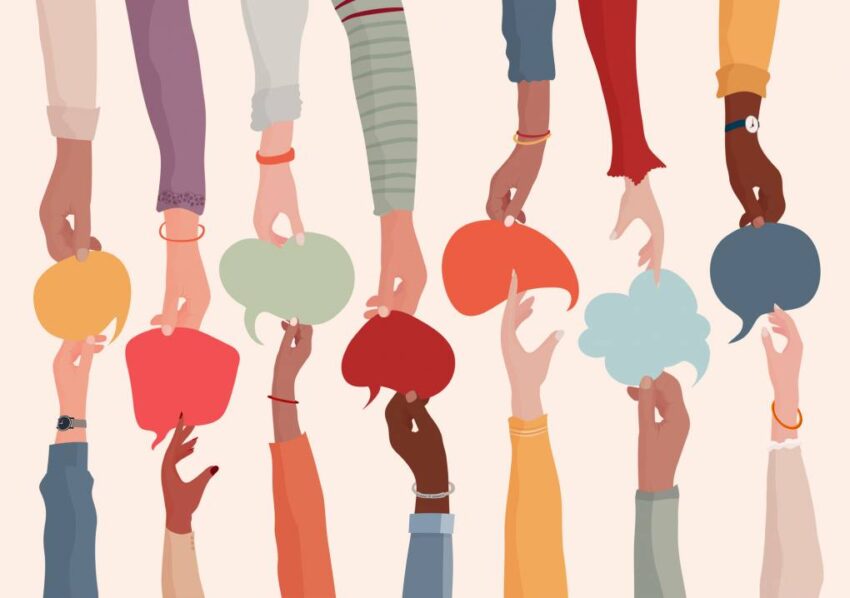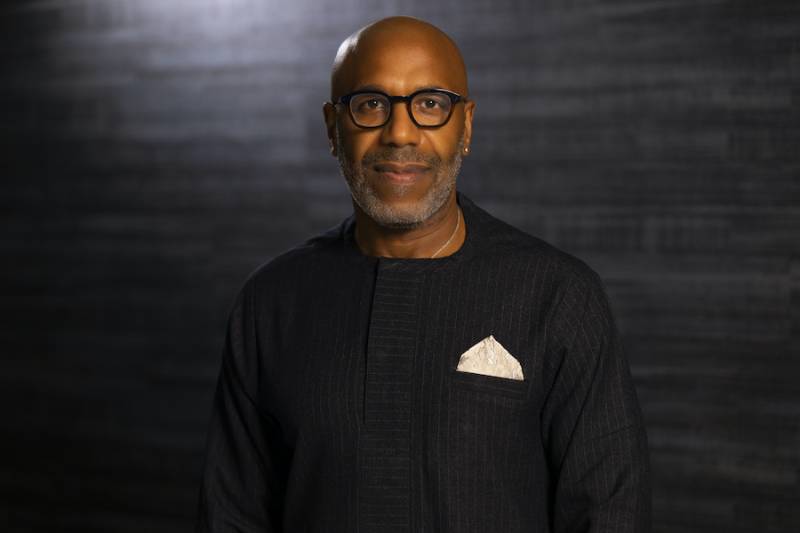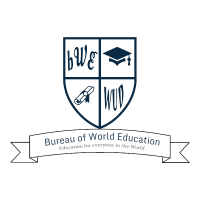
“Steadily if you go into the state of affairs, the lecturers are fairly pressured. There is a heightened power,” says Blandina.
In his function, Blandina observed how race and bias affected pupil outcomes. Because the sixth largest college district within the nation, Broward County accommodates 31 cities in Florida with college students representing 170 completely different international locations and talking over 100 languages.
“I’m an older white man doing this work,” says Blandina. “There’s been a historical past of over-identifying Black college students, Hispanic college students – particularly Black and Hispanic males – as having some kind of a studying or behavioral drawback.” He’s referring to nationwide knowledge that reveals Black, Latino and Native American college students are disciplined more harshly than their white counterparts with larger charges of suspension, expulsion and referral to legislation enforcement.
That is partly as a result of teachers in Broward County – and colleges throughout the nation – don’t reflect the identities of the scholars they educate, based on Dan Gohl, Broward County’s Chief Educational Officer. There’s already a cultural difference between lecturers – who’re imposing what they suppose is suitable classroom conduct – and college students, he says.
Singleton’s Brave Dialog coaching goals to assist educators have the instruments they should take part in generative conversations about race. Growing racial understanding and having interracial dialogue about race is the inspiration of making equitable modifications in colleges and may enhance pupil achievement. He says normalizing generative conversations about race permits different vital priorities to occur. “[It] permits us to enter into the area to develop the abilities, information and capacities that we’d like to have the ability to tackle the challenges introduced to us by race,” says Singleton.

The Brave Dialog framework for speaking about race will be boiled right down to what he calls the protocol. It’s made up of three elements: the agreements, compass and situations.
PART 1: AGREEMENTS
Earlier than partaking in a brave dialog about race, members must acknowledge and decide to working towards the 4 agreements.
- Keep engaged means members will likely be “morally, emotionally, intellectually and socially concerned within the dialogue” and won’t take a look at of the dialog. It’s not extraordinary for individuals to close down when the subject of race comes up.
- Converse your fact is being fully sincere about one’s ideas, emotions and opinions. Contributors will say what’s on their thoughts, not simply what they suppose others wish to hear.
- Expertise discomfort ensures that members would possibly really feel some distressing feelings. That’s regular. “Race was put into the human expertise for lower than noble function,” says Singleton about how race was created to assign worth to sure individuals over others. And due to that, conversations about race are inherently uncomfortable.
- Count on and settle for nonclosure means there aren’t any fast fixes and these conversations will likely be ongoing. Singleton likens this final settlement to constantly painting the Golden Gate Bridge so as to preserve it from getting rusty.
PART 2: THE COMPASS
The subsequent a part of the protocol is the compass, which helps individuals acknowledge the supply and influences of their and others’ responses to conversations about race. The compass highlights 4 broad classes that folks draw from to take care of racial info.
- Considering is often a bent to search for extra info or knowledge. Individuals who default to considering are likely to personally disconnect from the topic of race or continually require extra proof to justify its significance.
- Believing is the place one tries to determine the rightness or wrongness of a racial challenge based mostly on the values or techniques through which they had been raised.
- Doing is a want to reply with behaviors or motion, which can embrace performative gestures of solidarity. Individuals within the doing quadrant wish to have subsequent steps or get one thing performed when they’re confronted with a racial challenge, which might sidestep deeper structural points.
- Feeling is an impulse to reply by means of feelings like anger, defensiveness or disappointment. When racial info comes up, it triggers individuals within the emotions class to have an inner response.
PART 3: CONDITIONS
The ultimate a part of the protocol are the situations, that are six situations organized into three sequential tiers. The situations ”information members by means of what they’re supposed to speak about and what they have to be conscious of throughout the interracial dialogue.”
Have interaction: The primary tier is concentrated on personalizing race because it pertains to the person’s expertise and never getting sidetracked by anybody else’s expertise. “I am not speaking about Prince Harry and Meghan Markle proper now, however speaking about my experiences,” Singleton says.
One of many actions educators can do to follow personalizing race is a racial autobiography. “It makes you concentrate on if you actually turn out to be first conscious that you’re the race you might be. How does that affect you? And the way has that formed your life going ahead?” says Colton Griffith, a fourth grade instructor at a Broward County college. “I got here out of it figuring out myself higher.”
Maintain: The subsequent tier is about surfacing as many views as potential to gasoline the dialog. “You wish to arrange and get into dialog with individuals who do not essentially share your beliefs or your emotions or your considering,” says Singleton. The problem on this tier is to stop dwelling in an echo chamber and listen to a number of views with no want to guage or place settlement or disagreement.
Deepen: After finishing the have interaction and maintain tiers, the final step focuses on increasing one’s understanding about race and figuring out significant subsequent steps. “Then we get to the deep finish and we’re actually speaking about race as a system of energy and we’re speaking about how that energy performs out and what’s my relationship – and all of us have a relationship – to race as a system of energy,” says Singleton.
Deepening Racial Understanding to Remodel Instructing
For conduct specialist and autism coach Gary Blandina, the Brave Conversations course reworked the way in which he talked about race with different lecturers and directors. For instance, he’s modified the way in which he writes behavioral assessments after he’s known as in by lecturers to look at college students. He makes use of what he calls “non-judgemental language” that excludes using adjectives.
“As a result of adjectives, whereas they add coloration to an ideal piece of literature, if you find yourself describing a human being and what they’re doing or saying, adjectives betray your angle in direction of that particular person,” based on Blandina.
For instance, when he was known as in to look at a younger Black woman whose instructor mentioned had “behavioral points,” Blandina drew on what he discovered from Brave Conversations and introduced an consciousness that he didn’t have earlier than.
“She regarded tremendous; she was on level; she was answering. She was squirming in her chair, however that is not a criminal offense,” says Blandina. “Habits is communication. There is a motive the scholar is behaving that manner and we would not have uncovered that motive. And so even in a state of affairs like that, I’ve developed a mindset that I will go in to grasp.”
For fourth grade instructor Colton Griffith, the coaching emboldened him to reexamine his class curriculum when studying about Florida Native Individuals. “We bought to match the sources that our district makes use of to speak about what occurred to them after which go on to a similar website the place we are able to see their model of the historical past,” he mentioned. Whereas the textbook handled Native American historical past because the previous, studying straight from the supply helped them have a greater understanding of race at this second. “And that it isn’t that one thing occurred, it is that they are nonetheless right here.”
Collaborating within the course enabled these lecturers to attach their private racial experiences to how race reveals up in class settings. Now as a substitute of cringing when race comes up, they really feel ready to be part of the dialogue. Since beginning Brave Conversations, Broward County has seen increased literacy for third grade college students, which is a key educational benchmark, and decreased discipline disparities. Whereas Dan Gohl says they don’t credit score these modifications to anyone program, they acknowledge that collaborating within the course sparked wanted dialogue within the district.
“I believe it responded to a starvation that was in our neighborhood,” says Gohl. “What Brave Conversations was in a position to do was to provide us a structured course of and customary language.”
Regardless of this coaching, nobody is ideal. This previous Juneteenth, the dependy needed to right a mistake they made in connection to the vacation, which, as Singleton would say, is a part of the continuing work.
.@browardschools understandably desires to teach the neighborhood about Juneteenth, our new federal vacation. Sadly it did so with information they now admit was factually inaccurate. Mum or dad @adamrherman recognized the errors. @KatherineKoch instructed him information has been modified. pic.twitter.com/ktByjAfm4l
— Scott Travis (@smtravis) June 25, 2021
Take heed to this episode of the MindShift Podcast for extra info on how a whole district bought on board with utilizing Brave Conversations about Race. And obtain the PDF here to observe together with every a part of the protocol.
















